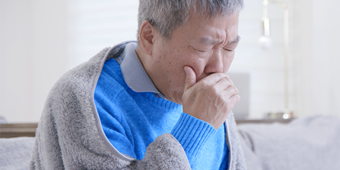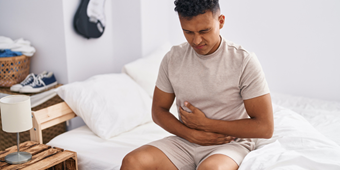To Isolate Or Quarantine: Here’s the Difference

Answer a few questions and we'll provide you with a list of primary care providers that best fit your needs.
Navigating day to day through COVID-19 comes with uncertainty, as you’ve discovered.
One of the puzzlements of pandemic life, for many, is the difference between quarantine and isolation – and understanding their distinct roles in controlling the spread of COVID-19. Laura Gottron, MD, tells Premier Health Now that’s what she has observed as medical director of the Miami Valley Hospital South Emergency Center and the Miami Valley Hospital Jamestown Emergency Center.
“I don’t think everyone understands when the doctor says they need to quarantine or isolate what that means. Having a health care provider spend a little extra time talking through what that means is really important,” Dr. Gottron says.
Here are the basic differences:
- Quarantine. When you discover you’ve come in close contact with someone who has COVID-19, you stay at home, or quarantine, to prevent spreading the virus to others.
- Isolation. If you’re sick or have tested positive for COVID-19, with or without symptoms, you stay at home to isolate from others, even within your home.
“When we talk about quarantine, we quarantine people, if they were exposed, to prevent them from potentially exposing others,” Dr. Gottron says.
She adds, “If a person is COVID-positive, then they are considered an ill individual who is contagious. And so for them, they need to self-isolate from others so they are not transmitting the disease.”
How To Isolate
You or a family member need to stay in isolation at home for at least 10 days after testing positive, or if ill, at least 10 days since your symptoms began, plus 24 hours of being fever-free without fever-reducing medication.
“We have found that isolation actually prevents the spread of the virus in a household if it’s done in the correct way,” Dr. Gottron says. That means, if you live with others, you should isolate in a separate room, day and night, with the door closed, and use a separate bathroom from others, if possible.
But Dr. Gottron acknowledges, “People living in apartments, where they share a bathroom, it can be really difficult.” She adds, “You have to think through your living situation and then creatively talk about how it’s going to work best.”
Here’s what she recommends:
- Whenever you leave your bedroom or other designated isolation room to go to the bathroom, wear a mask. She also recommends gloves, but adds, “that’s not always possible.”
- If you have to share a bathroom, don’t share towels. And wipe down high-touch surfaces with disinfectant wipes before you return to your room.
- Have someone prepare your food and set it outside your door to avoid contact. When you’ve finished eating, set the dinnerware outside your room.
Some families, she says, use their basement as an isolation area for a COVID-positive family member. Some families with COVID-positive college-age kids, who can afford the expense, have them stay in a hotel. She adds, “Some of the hotels have offered rooms to health care providers that test positive so they can stay away from their families.”
When advising a school district on how to comply with COVID-19 guidelines for their students, Dr. Gottron discovered that single parents who test positive – and whose young children depend solely on them for care – have an added challenge.
The child of a COVID-positive parent, she says, “essentially has to be in quarantine for 24 days.” That’s the sum of the parent’s 10-day isolation period, until their illness is over, plus a 14-day quarantine for the child, to make sure she doesn’t develop symptoms.
How To Quarantine
You need to take precautions, too, when you quarantine at home after coming into contact with someone who has COVID-19.
If you live with others, everyone in the household should wear a mask at home, “except when eating, and keep that social distance – six feet away from people – and make sure you’re washing your hands frequently,” Dr. Gottron says.
During the quarantine everyone in the household should monitor themselves for fever and other COVID-19 symptoms.
You should stay at home for 14 days after your last contact. The Centers for Disease Control and Prevention (CDC), however, recently revised its quarantine guidelines, from the standard 14 days.
The CDC maintains that 14 days is still the safest option, but has added that individuals who do not develop symptoms may quarantine for 10 days. And those who test negative for COVID may end their quarantine after seven days.
“The other thing that parents and families need to know,” says Dr. Gottron, “is that if a family member tests positive, you need to think about who they’ve been around, because I think there’s social responsibility in letting those people know that they should be monitoring for symptoms.” And that they should quarantine.
Answer a few questions and we'll provide you with a list of primary care providers that best fit your needs.
Sources: Laura Gottron, MD; NPR; Centers for Disease Control and Prevention





